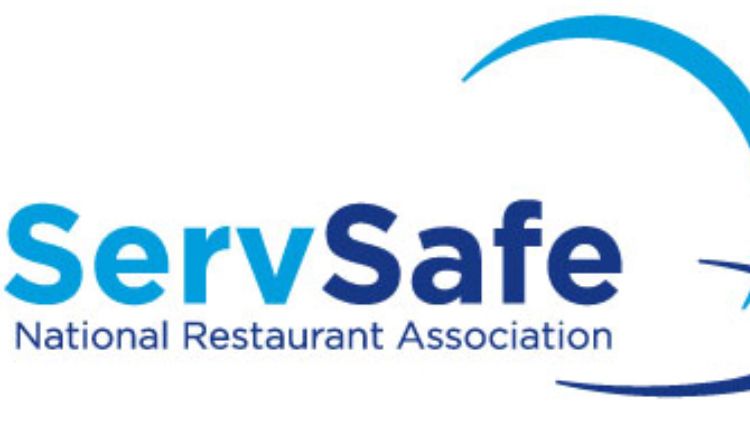This aims to educate individuals working in the food industry on proven procedures for manipulating, preparing, and administering Serve safe. The programme that developed the National Association of Restaurants plays a major role in ensuring that food is served in a safe and sanitary manner, reducing the risk of foodborne diseases and contamination. Restaurants, catering services, schools, hospitals, and other food-serving establishments require that trained staff follow legal and health standards, making it safe to certify the basic credentials.
The importance of serving in the food industry safety
The food Serve safe industry is highly regulated due to significant risks associated with food diseases. The only mistake in handling food can lead to contamination that affects tens or even hundreds of people. Make secure addresses of these risks by providing standardised training that includes key safety procedures.
For businesses, having employees certified in the ServSafe area not only ensures compliance with health codes but also builds confidence with customers who want to ensure that the food they consume is prepared under safe conditions. It increases career opportunities for employees because many employers prefer or require safe credentials during the hiring process.
Key components of SERVE SAFE TRAINING
Serve safe training covers a wide range of food safety topics. It begins with the basics of personal hygiene and the importance of washing hands, proper clothing and minimising direct contact with prepared meals. It also involves the controls of time and temperature, teaching workers to keep food outside the “danger zone” where bacteria grow fastest.
Prevention of cross-contamination is another main objective, with a focus on proper use of dishes, cutting plates, and storage procedures. In addition, the program educates individuals on cleaning and disinfection, pest management and proper treatment of chemicals in food services. Each of these components cooperates to create a comprehensive food safety culture.
Serve Safe Certification levels serving
Serve Safe offers multiple certification levels adapted to different roles in the food service industry. SERVSAFE FOOD HANDLER certification is designed for basic employees, focusing on basic food safety procedures.
The ServSafe manager certification goes deeper and addresses advanced topics such as food pathogens, risk management and compliance. There are also specialized certifications, such as alcohol ServerSafe for responsible alcohol services and ServerSafe allergens that provide training on food allergies and allergic reaction prevention. These certifications allow businesses to train their employees according to their specific obligations.
How to obtain a safe certification to serve
Obtaining a safe certification includes the completion of the required training and passing the exam. Training can be completed in person through approved instructors or online through the official SERVE SAFE platform. After studying the material, candidates must pass the exam to prove their knowledge. The test format varies depending on the certification level, with questions with multiple selection options to test understanding of the principles of food safety. After approval, the certification is valid for a certain number of years, usually five, after which the recovery may be required.
Benefits of safe certification for employers
Serve Safe in the food industry strongly benefit from the fact that employees have a safe certification. It ensures compliance with the Ministry of Health and reduces the risk of outbreaks of foodborne diseases that can harm the reputation and lead to legal consequences.
Certified employees contribute to smoother health authorities, fewer violations and higher levels of customer confidence. In addition, businesses with trained staff often experience better traffic efficiency because employees understand how to maintain cleanliness, safely manage food, and prevent expensive errors.
Benefits of Safe Certification for Employees
For employees, it provides a Serve Safe certification and provides valuable credentials that can open the door to career opportunities. Many employers require certification within their recruitment standards and can already distinguish its completion from others.
Certification also provides employees with confidence in their skills and ensures that they are able to work in any environment and follow the right safety standards. It can also serve as a springboard for progress to managerial roles, as a higher level of safe certification serves to guide and advance knowledge of food safety.
Common challenges in the field of food safety and how safe it helps
Serve Safe Food safety challenges are numerous, from incorrect storage and manipulation to the risks that represent allergens. One of the most common problems is maintaining the right food temperatures during storage, preparation, and service. Give it safe training addresses by teaching critical limits for cooling, cooking, and holding food.
Another challenge is cross-contamination, especially in busy kitchens, where raw and cooked foods are often processed. Safe administration provides clear instructions to prevent these risks. In addition, it prepares employees to deal with situations such as chemical risks, pests, and unexpected health inspections with professionalism and knowledge.
The role is to serve safety in preventing the disease caused by food
Foodborne diseases can have devastating consequences, both for individuals and businesses. Breaks often lead to lawsuits, fines, and loss of customer credibility. Serve Safe training ensures that employees understand pathogens responsible for common food diseases, including Salmonella, E. coli, and Norovirus.
By teaching safe cooking, proper cleaning and disinfection, and strict hygienic standards, it safely minimises the chances of such outbreaks. This not only protects customers but also protects the financial stability and reputation of food businesses.
The Bottom Lines
Serve Safe is more than just a certification programme – it is the basis for building a culture of security and responsibility in the food service industry. It confuses employees with knowledge and skills to protect customers from food-borne diseases while helping businesses to remain in accordance with regulations and maintain a strong reputation. Whether employees or experienced basic managers provide basic training, it benefits to all involved in food preparation and service. Since the demand for safe eating experiences continues to grow, safe certification remains for individuals and organizations.





